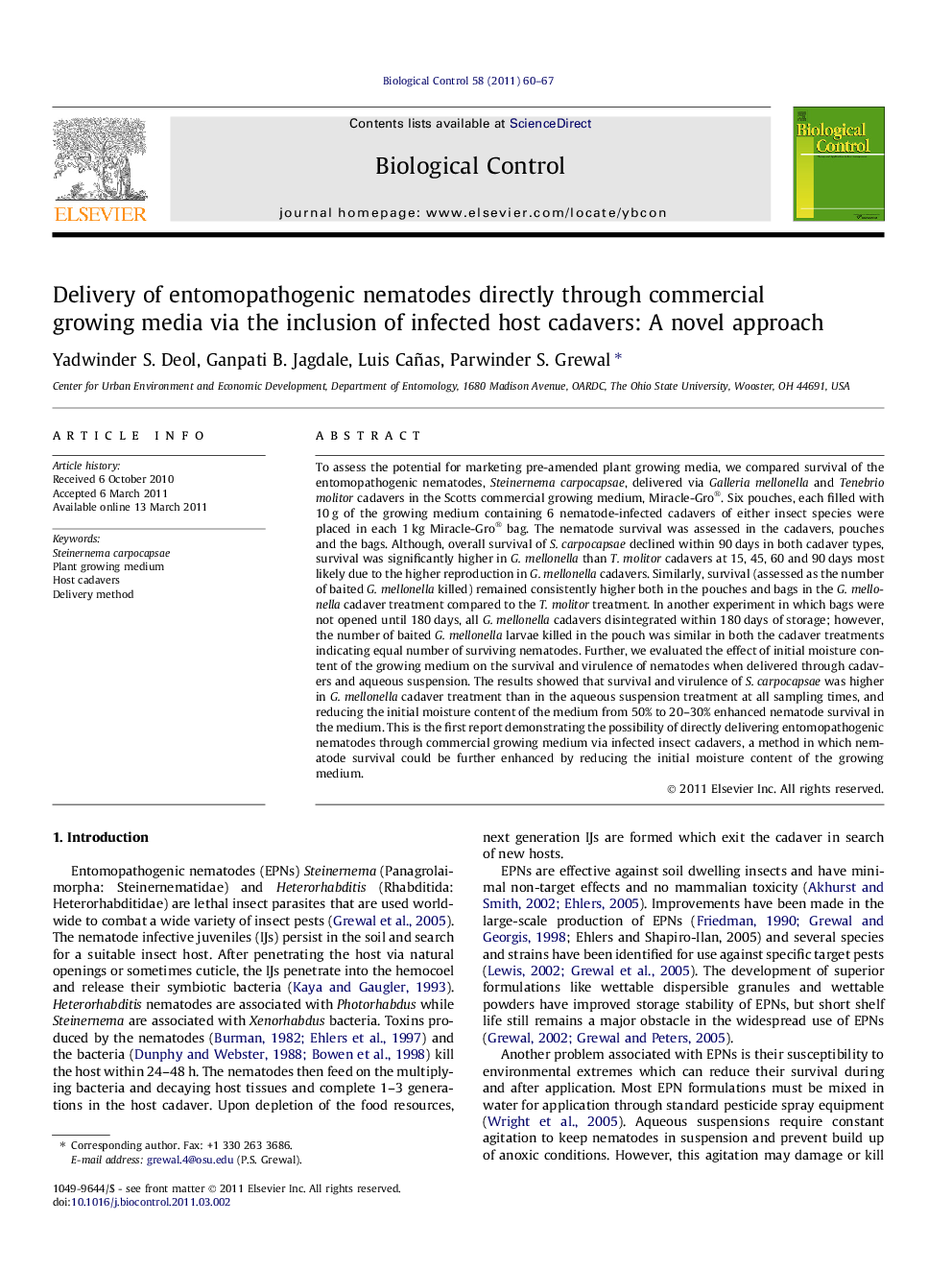| Article ID | Journal | Published Year | Pages | File Type |
|---|---|---|---|---|
| 4504170 | Biological Control | 2011 | 8 Pages |
To assess the potential for marketing pre-amended plant growing media, we compared survival of the entomopathogenic nematodes, Steinernema carpocapsae, delivered via Galleria mellonella and Tenebrio molitor cadavers in the Scotts commercial growing medium, Miracle-Gro®. Six pouches, each filled with 10 g of the growing medium containing 6 nematode-infected cadavers of either insect species were placed in each 1 kg Miracle-Gro® bag. The nematode survival was assessed in the cadavers, pouches and the bags. Although, overall survival of S. carpocapsae declined within 90 days in both cadaver types, survival was significantly higher in G. mellonella than T. molitor cadavers at 15, 45, 60 and 90 days most likely due to the higher reproduction in G. mellonella cadavers. Similarly, survival (assessed as the number of baited G. mellonella killed) remained consistently higher both in the pouches and bags in the G. mellonella cadaver treatment compared to the T. molitor treatment. In another experiment in which bags were not opened until 180 days, all G. mellonella cadavers disintegrated within 180 days of storage; however, the number of baited G. mellonella larvae killed in the pouch was similar in both the cadaver treatments indicating equal number of surviving nematodes. Further, we evaluated the effect of initial moisture content of the growing medium on the survival and virulence of nematodes when delivered through cadavers and aqueous suspension. The results showed that survival and virulence of S. carpocapsae was higher in G. mellonella cadaver treatment than in the aqueous suspension treatment at all sampling times, and reducing the initial moisture content of the medium from 50% to 20–30% enhanced nematode survival in the medium. This is the first report demonstrating the possibility of directly delivering entomopathogenic nematodes through commercial growing medium via infected insect cadavers, a method in which nematode survival could be further enhanced by reducing the initial moisture content of the growing medium.
Graphical abstractFigure optionsDownload full-size imageDownload as PowerPoint slideHighlights►Deol et al. delivery of entomopathogenic nematodes directly through commercial growing media via the inclusion of infected host cadavers: a novel approach. ► This is the first study demonstrating the potential for delivery of biocontrol nematodes directly through the growing media used in potted plant and home and garden markets. ► The study shows that the nematodes placed in the growing media via infected cadavers can survive and be infectious up to 180 days (6 months) at 25 °C (See graph below). ► The study also shows that the nematode survival in the growing media depends on the initial moisture content of the media and suggests that there is potential for extending nematode survival even further through the manipulation of moisture.
